
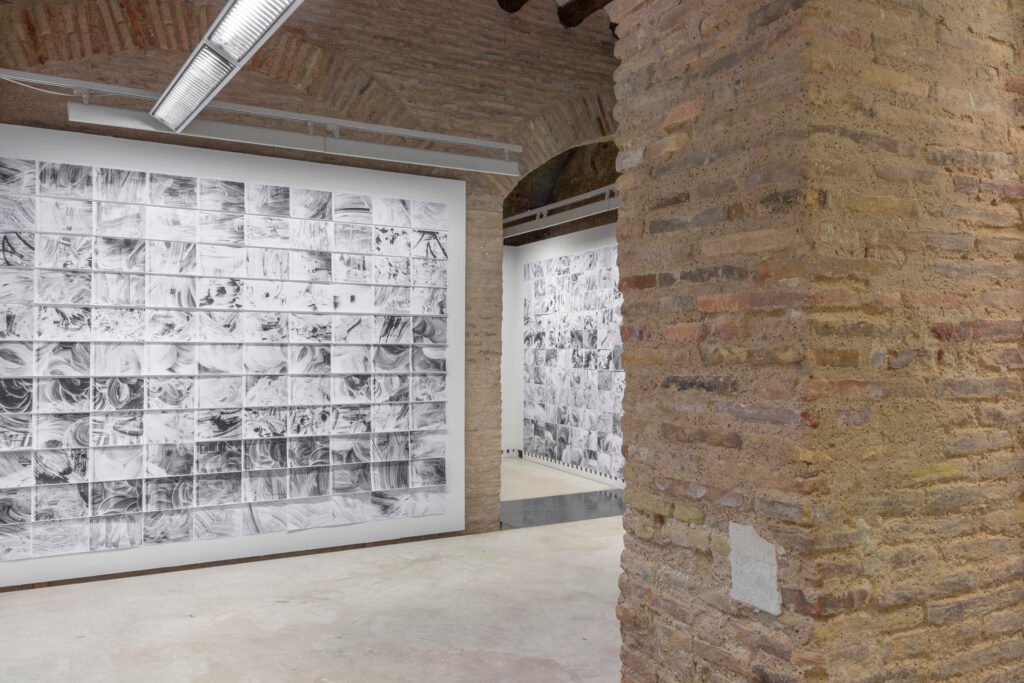
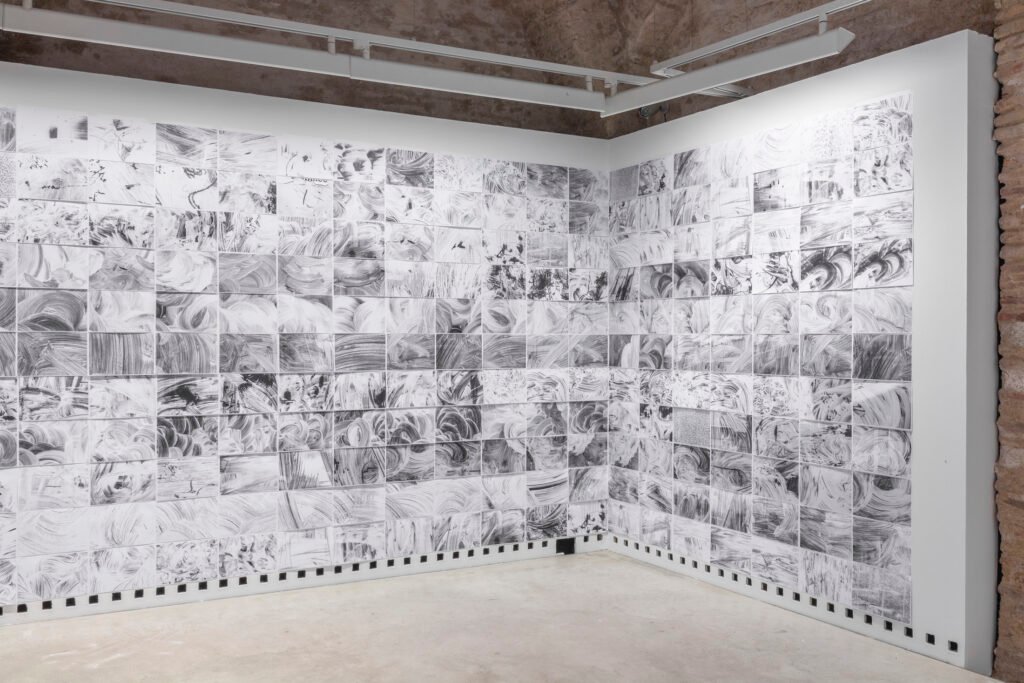
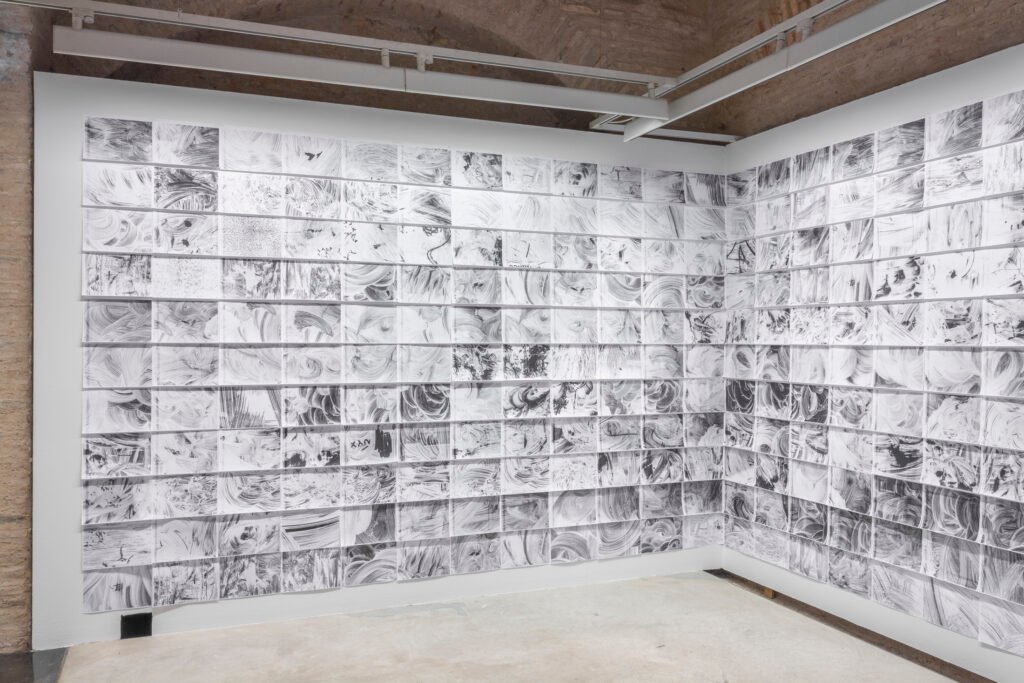
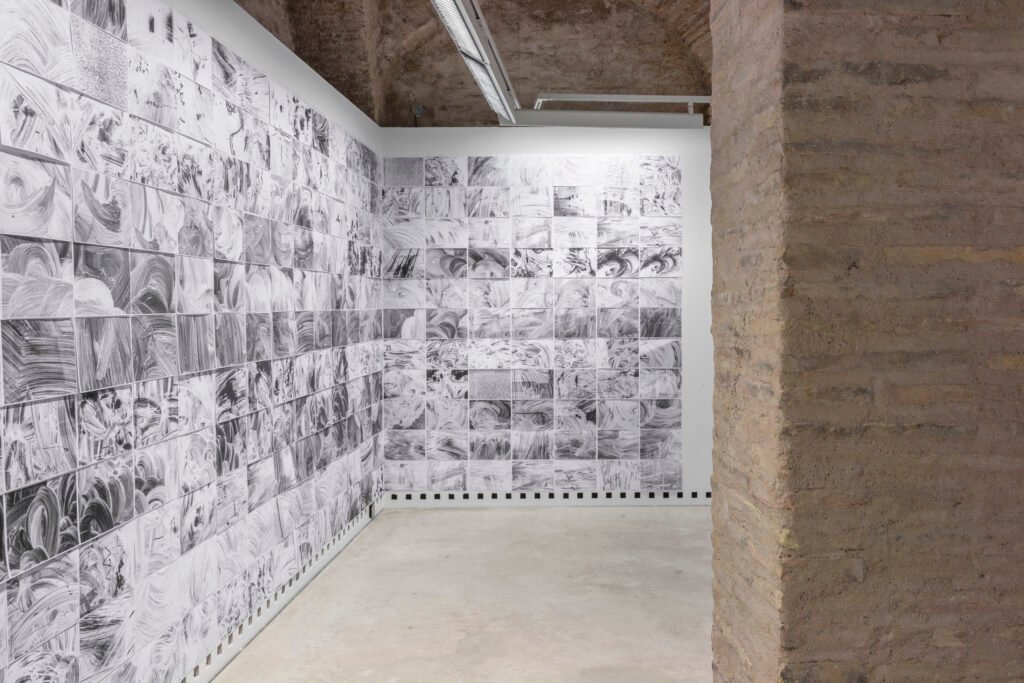

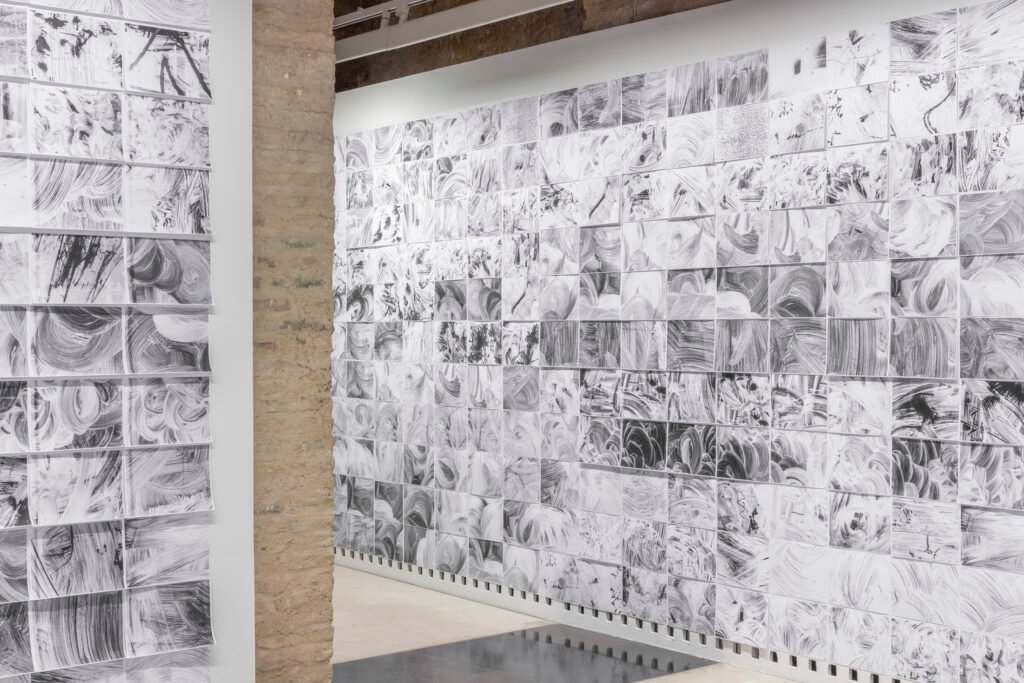
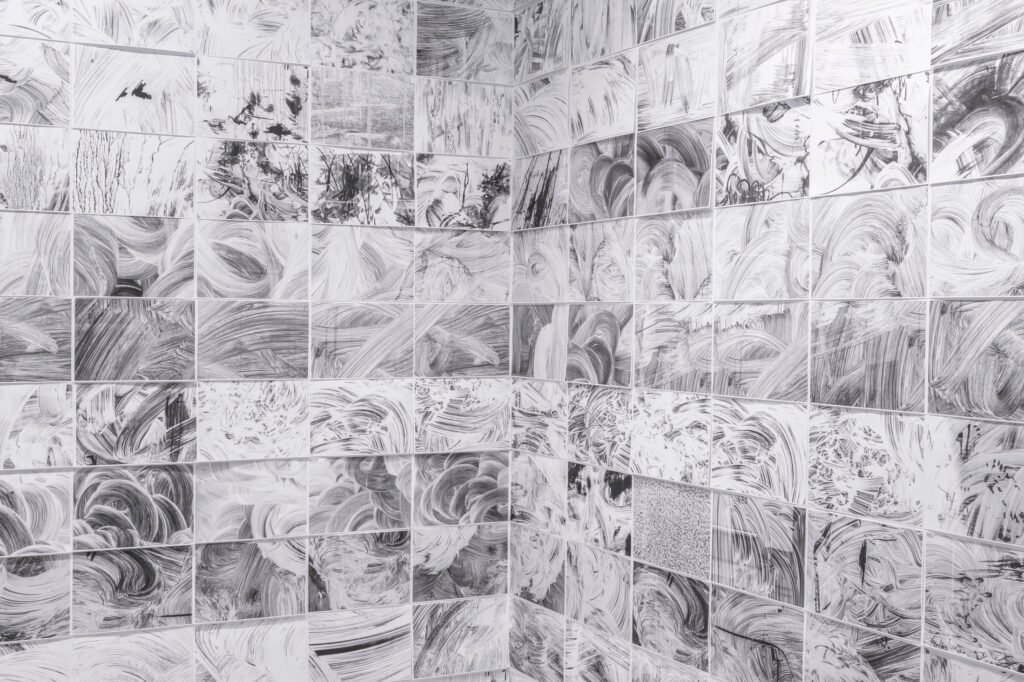

Blanco de España, or albayalde, it’s a material used tradicionally in paint process to prime canvas before paint. Currently, the value of this material it’s insignificant so it’s used, by the construction workers, to prevent that people see the interior of the premises where they are working. I.e. is used as a pictorial tool on a vision device -shop windows- which serves as surface or canvas.
The gesture of the improvised painter it’s the beginning of a project that it’s based on the interest to provide these symbols the artistic value that also lack initially. Through the photographic language, as a ready-made, I reproduce the the technique and the aestethic of the worker gesture, establishing links between the art history, appropriating a certain gestures as characteristic as the brush-stroke of American Abstract Expressionism.
Through this symbolic intervention, which lacks artistic motivation, the worker creates a visual boundaries censoring the reality that exist in the interior of the store. From that moment on, the vision of the pedestrian -as well as the worker’s- is limited, cancelling the perception of the interior of the local with a stroke thats hasn’t got without any communicative motive, although proposes a new reality through an abstract gesture, questioning the idea of the term representation like as an impossibility and therefore an inscription that prevents seeing the interior clearly.
_
Blanco de España, o albayalde, es un material empleado tradicionalmente en pintura artística. En la actualidad, debido a su escaso valor material, es utilizado por los trabajadores de la construcción para impedir que el viandante vea el interior del local en el que trabajan. Es decir, se usa como una herramienta -pictórica- sobre un dispositivo de visión -escaparate- que hace las veces de soporte.
El gesto de este improvisado pintor es el detonante de un proyecto que surge del interés por dotar a estos símbolos del valor artístico del que carecen en su momento primigenio. A través de la práctica fotográfica, como si de un ready-made se tratara, reproduzco la técnica y la estética de ese «pintor-trabajador», creando vínculos con la historia del arte, apropiándome de un gesto tan característico como es el del expresionismo abstracto americano.
Mediante esta intervención, que carece de inquietud artística, el operario crea una frontera perceptiva censurando la realidad que se encuentra en el interior del local. A partir de ese momento, la visión de los peatones -así como la del propio trabajador-, se ve limitada, cancelando la percepción del interior del establecimiento en reforma mediante un trazo que carece de cualquier pretensión comunicativa, pese a que propone una nueva realidad a través de un gesto abstracto, cuestionando la idea de representación como imposibilidad y, por tanto, una inscripción que impide ver con claridad el interior.
_
Blanco de España
Laser print on paper and adhesive tape.
2022. .
